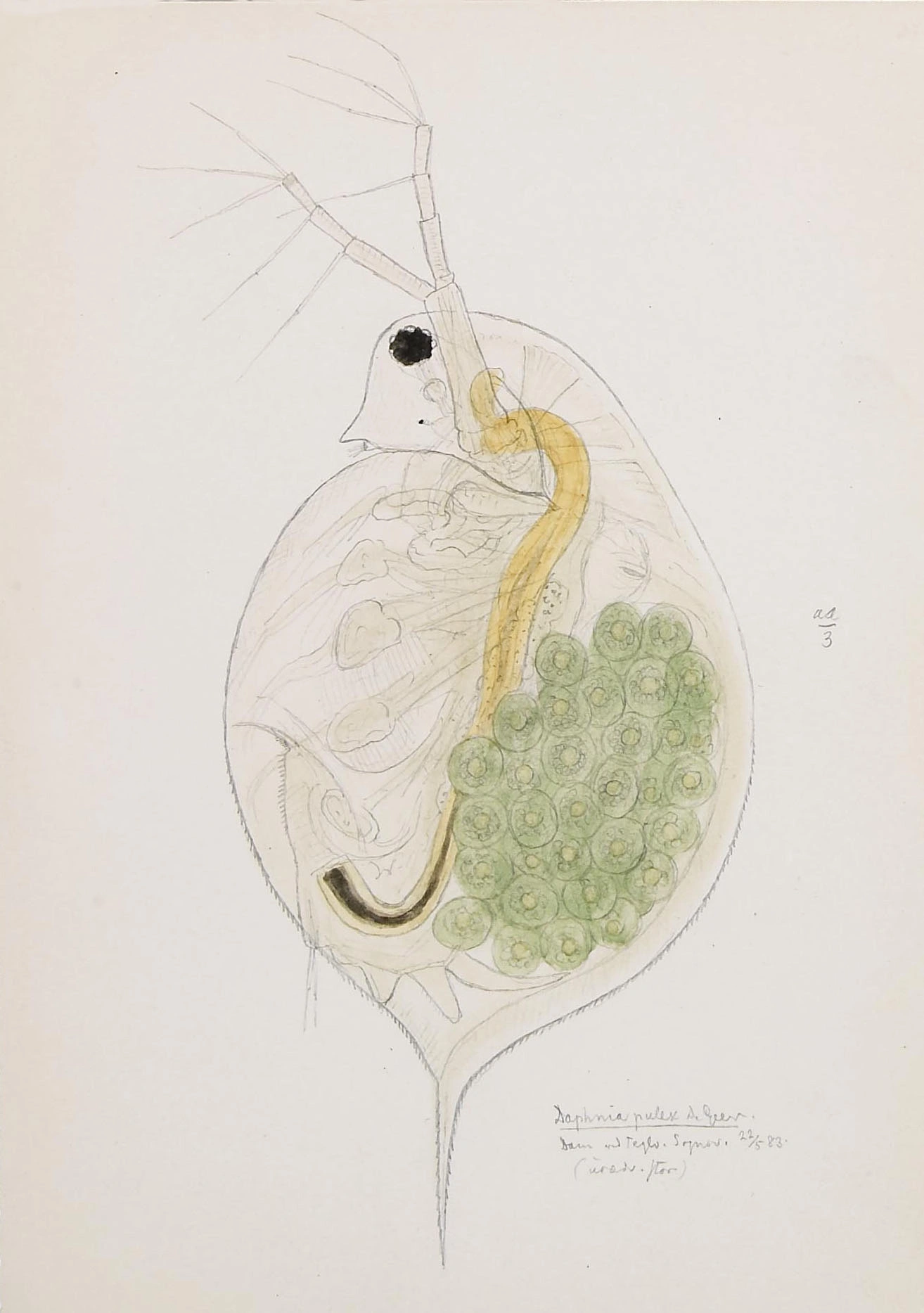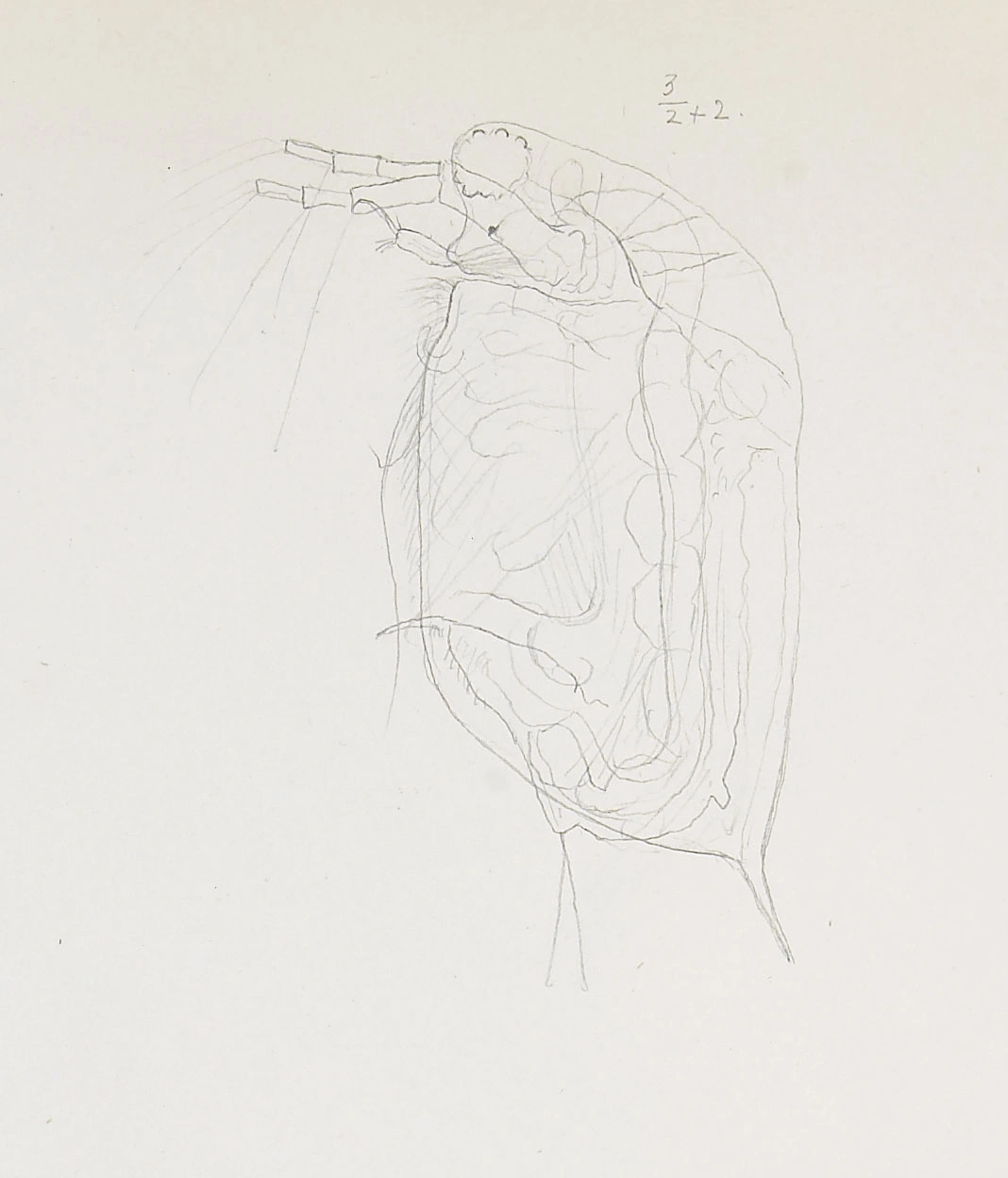Daphnia pulex
Daphnia pulex has a short and stocky body shape and the abdominal claw has a varying number of coarse denticles close to the basis. It is known as an early colonisator of small nutrient rich ditches and ponds.
Key characteristics
Daphnia pulex (female)
Daphnia pulex (male)
Daphnia pulex has a body shape which is generally rather short and stocky. Three characters separate this species from D. longispina with which it may co-occur, its eye is smaller, the head has a strongly rounded curve and its abdominal spine is normally very short. If there is still any doubt, we can use the appearance of the abdominal claw, which has a varying number of coarse denticles close to the basis. The innermost ones are relative small, while the outermost consist of 3–5 very prominent coarse spines. D. pulex usually has a brisk red colour.
Female: Length 1.0–3.3 mm
Male: Length 1.0–1.8 mm
Ecology and distribution
D. pulex is common in fishless ditches and small ponds. It is a typical early colonisator, and may therefore also occur in lakes after disturbances, i.e. after treatment with rotenone. Though it is found in the far north and in the south west, the majority of records are from small ponds and ditches in the surroundings of Oslo. The frequency of water bodies that contains D. pulex is highest when pH is above 6.5 and it is never found at pH<5.5. D. pulex is associated with nutrient rich water, and does never occur in electrolyte poor water.
| Vitenskapelig navn | < 4,5 | 4,5 - 4,9 | 5,0 - 5,4 | 5,5 - 5,9 | 6,0 - 6,4 | 6,5 - 7,0 | 7,0 - 7,4 | > 7,5 |
|---|---|---|---|---|---|---|---|---|
| 0 | 0 | 0 | 3 | 3,4 | 7,6 | 11,3 | 19,8 |
| Vitenskapelig navn | < 1,0 | 1,0 - 1,4 | 1,5 - 1,9 | 2,0 - 2,9 | 3,0 - 3,9 | 4,0 - 4,9 | 5,0 - 6,9 | 7,0 - 9,9 | > 10,0 |
|---|---|---|---|---|---|---|---|---|---|
| 0 | 0 | 0,4 | 2 | 1,3 | 4,3 | 5,9 | 13 | 33 |
| Vitenskapelig navn | < 0,01 | 0,01 - 0,09 | 0,1 - 0,9 | 1,0 - 9,9 | 10,0 - 99 | 100 - 999 | > 1000 |
|---|---|---|---|---|---|---|---|
| 31,4 | 25,4 | 6,9 | 1,9 | 0,3 | 0,3 | 4,3 |
| Vitenskapelig navn | < 100 | 100-299 | 300-499 | 500-699 | 700-999 | >1000 |
|---|---|---|---|---|---|---|
| 5,5 | 11,7 | 1 | 0,3 | 0 | 0 |

